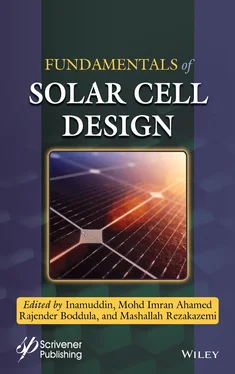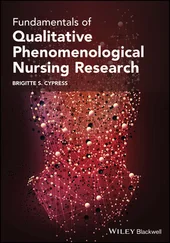55. Uttam K. Kumawat, Kamal Kumar, Sumakesh Mishra, and Anuj Dhawan, Plasmonic-enhanced microcrystalline silicon solar cells. Journal of the Optical Society of America B, 37:2, pp. 495–504, 2020.
56. Stuart HR, Hall DG, Absorption enhancement in silicon-on-insulator waveguides using metal island films. Applied Physics Letters, 69: 2327, 1996.
57. Derkacs D, Improved performance of amorphous silicon solar cells via scattering from surface plasmon polaritons in nearby metallic nanoparticles. Applied Physics Letters , 89: 093103, 2006.
58. Schaadt DM, Feng B, Yu ET, Enhanced semiconductor optical absorption via surface plasmon excitation in metal nanoparticles. Applied Physics Letters, 2005; 86: 063106.
59. Wu K, Rodríguez-Córdoba WE, Yang Y, Lian T, Plasmon-induced hot electron transfer from the Au tip to CdS rod in CdS-Au nanoheterostructures. Nano Lett. 13: 5255–5263, 2013.
60. J.-Y. Lee et al. , Solution-Processed Metal Nanowire Mesh Transparent Electrodes. Nano Lett. 8, 689, 2008.
61. Priyanka U. Londhe, Ashwini B. Rohom, N. B. Chaure, Improvement in the CIGS Solar Cell Parameters by Using Plasmonic (Au) Nanoparticle, Nanoscience and Nanotechnology , 6:1A, pp. 43–46, 2016.
62. Sangsu Kim, Jonghee Suh, Taeyueb Kim, Jinki Hong, and Shinhaeng Cho, Plasmonic effect of spray-deposited Au nanoparticles on the performance of CSS CdS/CdTe solar cells. Applied Surface Science, 350, pp. 69–73, 2015.
63. N. Sapalatu, J. Hiie, N. Maticiuc, M. Krunks, A. Katerski, V. Miklli and I. Sildos, Plasmon-enhanced performance of CdS/CdTe solar cells using Au nanoparticles. Optics Express, 27:5, pp. 22017–22024, 2019.
64. Omar A M Abdelraouf, Ahmed Shaker, Nageh K. Allam, Enhancing light absorption inside CZTS solar cells using plasmonic and dielectric wire grating metasurface. Metamaterials XI , 10671, 106712K, 2018.
65. Zhang, D., Choy, W. C. H., Xie, F., Sha, W. E. I., Li, X., Ding, B., Cao, Y., Plasmonic electrically functionalized TiO2 for high-performance organic solar cells. Advanced Functional Materials , 23 (34), 4255–4261, 2013.
66. Su, Y. H., Ke, Y. F., Cai, S. L., & Yao, Q. Y., Surface plasmon resonance of layer-by-layer gold nanoparticles induced photoelectric current in environmentally-friendly plasmon-sensitized solar cell. Light: Science and Applications , 1, June, 2012.
67. Liu L. CdSe quantum dot-sensitized Au/TiO 2hybrid mesoporous films and their enhanced photoelectrochemical performance. Nano Research, 4: 249– 258, 2010.
68. Li J, Cushing SK, Zheng P, Meng F, Chu D, Wu N, Plasmon-induced photonic and energy-transfer enhancement of solar water splitting by a hematite nanorod array. Nat Commun. , 4: 2651, 2013.
69. Chen, X., Jia, B., Zhang, Y., & Gu, M., Exceeding the limit of plasmonic light trapping in textured screen-printed solar cells using Al nanoparticles and wrinkle-like graphene sheets. Light: Science and Applications , 2, August , 2013.
70. Chen, X., & Gu, M., An efficiency breakthrough in perovskite solar cells realized by Al-coated Cu nanoparticles. Optics InfoBase Conference Papers, OSA – The Optical Society, 2014.
71. Ding, I. K., Zhu, J., Cai, W., Moon, S. J., Cai, N., Wang, P., McGehee, M. D., Plasmonic Dye-sensitized solar cells. Advanced Energy Materials , 1 (1), 52–57, 2011.
72. Song, D. H., Kim, H. Y., Kim, H. S., Suh, J. S., Jun, B. H., and Rho, W. Y., Preparation of plasmonic monolayer with Ag and Au nanoparticles for dye-sensitized solar cells. Chemical Physics Letters , 687 , 152–157, 2017. https://doi.org/10.1016/j.cplett.2017.08.051
73. Nikhil Chander, Puneet Singh, A.F. Khan, Viresh Dutta, Vamsi K. Komarala, Photocurrent enhancement by surface plasmon resonance of gold nanoparticles in spray deposited large area dye sensitized solar cells. Thin Solid Films , 568, 74–80, 2014.
74. Bhardwaj, S., Pal, A., Chatterjee, K., Rana, T. H., Bhattacharya, G., Roy, S. S., Biswas, S., Significant enhancement of power conversion efficiency of dye-sensitized solar cells by the incorporation of TiO 2–Au nanocomposite in TiO 2photoanode. Journal of Materials Science , 53 (11), 8460–8473, 2018.
75. C. Hägglund, M. Zäch and B. Kasemo, Enhanced Charge Carrier Generation in Dye Sensitized Solar Cells By Nanoparticle Plasmons. Appl. Phys. Lett . 92, 013113, 2008.
76. I.-K. Ding et al. , Plasmonic Dye-Sensitized Solar Cells. Adv. Energy Mater. 1, 51, 2011.
77. Li J, Cushing SK, Zheng P, Senty T, Meng F, Bristow AD, Solar hydrogen generation by a CdS-Au-TiO 2sandwich nanorod array enhanced with Au nanoparticle as electron relay and plasmonic photosensitizer. J Am Chem Soc. , 136: 8438–8449, 2014.
78. Choi H, Chen WT, Kamat PV, Plasmonic versus electron charging effects of metal nanoparticles in dye-sensitized solar cells. ACS Nano. , 6: 4418–4427, 2012.
79. Liu Z, Hou W, Pavaskar P, Aykol M, Cronin SB, Plasmon resonant enhancement of photocatalytic water splitting under visible illumination. Nano Lett. , 11: 1111–1116, 2011.
80. Linic S, Christopher P, Ingram DB, Plasmonic-metal nanostructures for efficient conversion of solar to chemical energy. Nat Mater. , 10: 911–921, 2011.
81. Si Chen, Yong Jie Wang, Qipeng Liu, Guzheng Shi, Zeke Liu, Kunyuan Lu, Lu Han, Xufeng Ling, Han Zhang, Si Cheng, Wanli Ma, Broadband Enhancement of PbS Quantum Dot Solar Cells by the Synergistic Effect of Plasmonic Gold Nanobipyramids and Nanospheres. Advanced Energy Materials, 8:8, 1701194, 2018.
82. Chien-Chung Lin, Hsin-Chu Chen, Yu Lin Tsai, Hau-Vei Han, Huai-Shiang Shih, Yi-An Chang, Hao-Chung Kuo, and Peichen Yu, Highly efficient CdS-quantum-dot-sensitized GaAs solar cells. Optic Express. 20:S2, pp. A319-A326, 2012.
83. Sopit Phetsang et al ., Investigation of a gold quantum dot/plasmonic gold nanoparticle system for improvement of organic solar cells. Nanoscale Adv. , 1, 792–798, 2019.
84. Lin, S. J., Lee, K. C., Wu, J. L., and Wu, J. Y., Enhanced performance of dye-sensitized solar cells via plasmonic sandwiched structure. Applied Physics Letters , 99 (4), 2011.
85. S. Saravanan, R. Kato, M. Balamurugan, S. Kaushik, T. Soga, Efficiency improvement in dye sensitized solar cells by the plasmonic effect of green synthesized silver nanoparticles. Journal of Science: Advanced Materials and Devices 2, 418e424, 2017.
86. Kai Yao, Hongjie Zhong, Zhiliang Liu, Zhiliang Liu, Plasmonic Metal Nanoparticles with Core–Bishell Structure for High-Performance Organic and Perovskite Solar Cells. ACS Nano 2019, 13, 5, 5397–5409.
87. Xun Cui, Yihuang Chen, Meng Zhang, Yeu Wei Harn, Jiabin Qi, Likun Gao, Zhong Lin Wang, Jinsong Huang, Yingkui Yang, Zhiqun Lin, Tailoring carrier dynamics in perovskite solar cells via precise dimension and architecture control and interfacial positioning of plasmonic nanoparticles. Energy Environ. Sci. ,2020. https://doi.org/10.1039/C9EE03937F.
88. Joun Lee, Syed Mubeen, Xiulei Ji, Galen D. Stucky, and Martin Moskovits, Plasmonic Photoanodes for Solar Water Splitting with Visible Light. Nano Lett. , 12, 5014−5019, 2012.
89. Wallace C. H. Choy and Xingang Ren , Plasmon-Electrical Effects on Organic Solar Cells by Incorporation of Metal Nanostructures. IEEE Journal of Selected Topics in Quantum Electronics , 22:1, 2016.
90. Stephanie Essig et al ., Raising the one-sun conversion efficiency of III–V/Si solar cells to 32.8% for two junctions and 35.9% for three junctions. Nature Energy , 2, 17144, 2017.
Читать дальше












